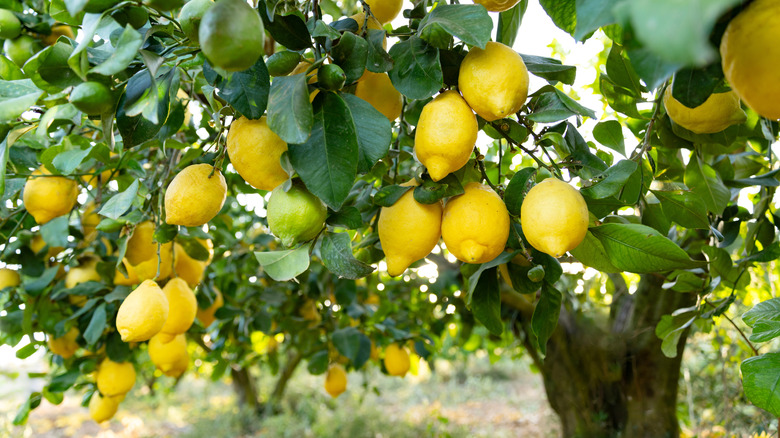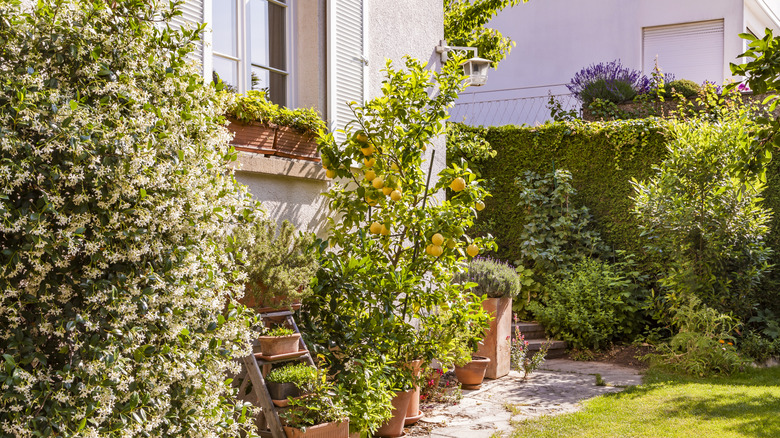The Trees That Might Be Slowly Hurting Your Lemon Trees And Their Harvest
You head outside and notice that your favorite yellow citrus fruit tree isn't as fruitful as you thought it would be. This leads you to wondering why your lemon tree is struggling in your garden, and the answer may lie with the other trees you have next to it. Just like every other plant, there are some varieties that shouldn't be planted next to your citrus. When it comes specifically to your lemon tree, black walnut (Juglans nigra), evergreen (like those from the family Pinaceae), and olive trees (Olea europaea) might be slowly hurting its growth and harvest.
Never plant a black walnut tree next to your lemon tree because you'll be causing your fruit harm. These walnut trees release a chemical called juglone which stunts a lemon tree's growth and can eventually kill it. Conifer trees have acidic needles, which alters the soil's pH, making these conifers also compete with your lemon tree for water. An olive tree is another plant that you want to keep far away from your lemon tree because they can share similar diseases like root rot and canker. Many other trees, like orange trees, will also compete for water and soil as well as some root systems may damage your lemon tree's roots. Since these citrus plants need anywhere from 8 to 12 feet of space to grow, it is best to not plant another tree next to it. Instead, it is better to stick to companion plants near your lemon tree.
Add companion plants instead to help the growth and harvest of your lemon tree
Between knowing the spacing, potential competition, and overall capability when it comes to other trees, why over complicate it by planting another tree when companion plants will do way more for your lemon tree. So what is companion planting and how does it benefit your garden? This kind of planting is the process of growing many plants near each other to improve a plant's overall growth and harvest. And luckily with lemon trees, there are a variety of plants that have a positive relationship with them.
As a plant that thrives in warmer climates with a USDA hardiness zone of 9 to 11, you need to add plants that grow the best in these zones like rosemary, yarrow, roses, and jasmine. Some companion plants like bay laurels (Laurus nobilis) and tea olive (Osmanthus fragrans) can help with overall taste composition, while other plants like petunias and marigolds can keep pests away. Depending on the issues you have in your garden, there are a load of options that you can choose from. Concerned about the problems that come with outside growing? You don't need a big outdoor space to grow a lemon tree; instead, here's how to do it indoors.

